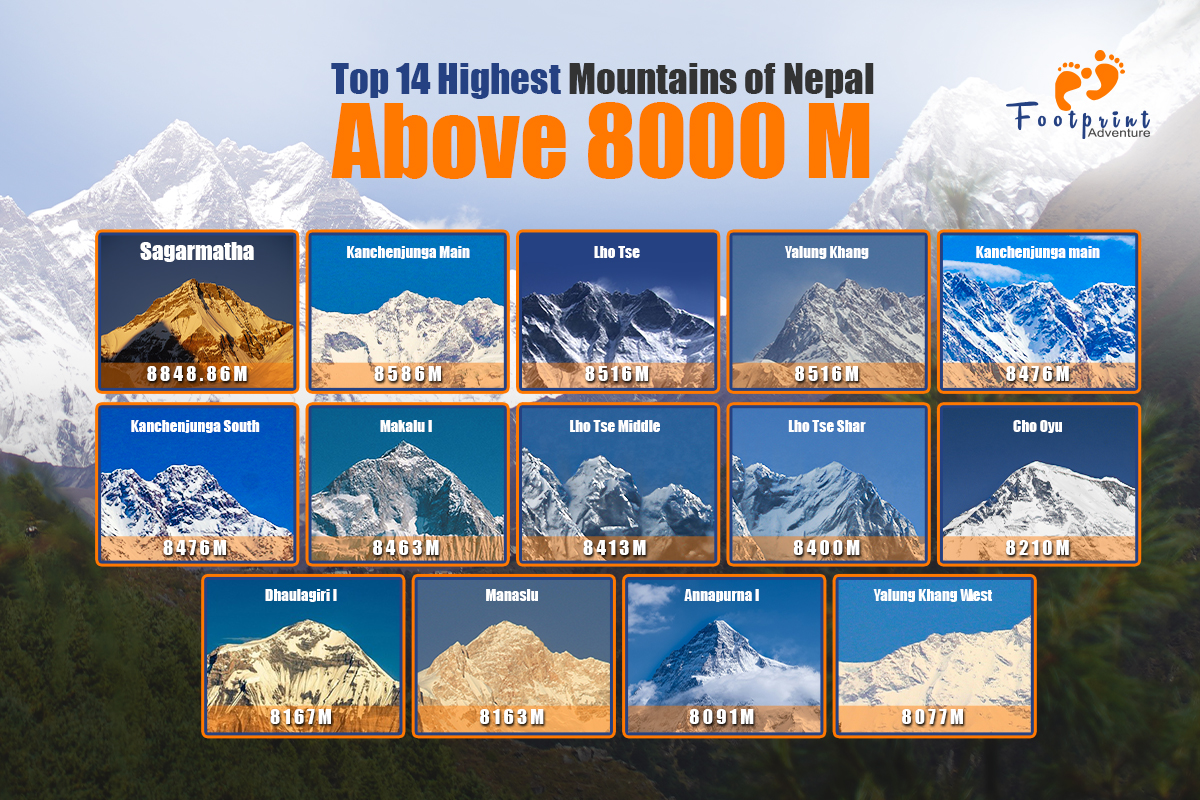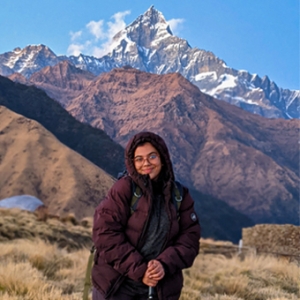In a major boost for mountaineers globally, Nepal had introduced the opening of the six new peaks above 8,000 meters, stamping its authority further as the international hub for high-altitude expeditions. This adds to a total of 14 officially recognized peaks above 8,000 meters in Nepal and seals its reputation as the number one destination globally for climbers intent on scaling some of Earth's highest peaks.
A Historic Update: Six New 8,000ers
On February 1, 2025, The Department of Tourism, Nepal announced the inclusion of six new peaks to its official list of mountains above 8,000 meters. The new peaks in the Kanchenjunga and Lhotse Himalayan Ranges were closely surveyed and officially recognized after a very long evaluation process. The six peaks added to the list are:
Kanchenjunga Range
- Yalung Khang (8,505 meters)
- Yalung Khang West (8,077 meters)
- Kanchenjunga Central (8,473 meters)
- Kanchenjunga South- 8,476 meters
Lhotse Range
- Lhotse Middle (8,410 meters)
- Lhotse Shar (8,400 meters)
This major update on the list concerning peaks in Nepal above 8,000-meter peaks stands tall as a landmark victory within the Nepalese Mountaineering Community. This newly listed set of peaks presents new opportunities for renowned climbers all over the world and adds to Nepal's prestige as a hot destination for climbing at high altitudes.

Nepal Mountaineering Industry: An Emerging Sector
These new peaks have been added at a time when Nepal's mountaineering industry has begun to boom. Only in 2023, permits for over 2,500 climbers have already been issued and generated a fair revenue. With this recognition, it is highly expected that many more climbers would enter the region just with the motive of taking up the tough landscape presented by these less-known, but equally enchanting, peaks.
These six new peaks cater to a wide range of climbers, from elite mountaineers seeking new routes to thrill-seeking enthusiasts. Similarly, the Nepalese government is hoping to boost local economies-particularly in the most remote parts-as mountaineering expeditions support the local businesses, hotels, and trekking guides.
Safety Concerns of Mountainerring in Nepal
While the identification of these new peaks is considered a landmark development for the Nepalese mountaineering industry, there are also various important regulations taken by the government with a view to ensuring that the climbers have safe expeditions and the ecology remains undisturbed.
Most strikingly, the revised rules include the ban on solo expeditions on all mountains above 8,000 meters, including iconic Mount Everest. This was done to try and cut the number of accidents and fatalities on these high-altitude peaks where risks are very high. Now, all climbers must be accompanied by a team, with at least one mountain guide or high- altitude worker per two climbers.
Further, it issued a policy imposing increased royalties from foreign climbers to pay for enhancing safety measures and supporting environmental initiatives. These changes signify that Nepal is indeed committed to guaranteeing safety to climbers and preserving the natural beauty of its mountains.
Other important regulation is a ruling that requires every climber to take the mountain waste back. Recently, due to environmental aspects of high altitude mountaineering, a new wave of growing concern seems evident about the rubbish left behind on mountains by their climbers. Imposing such laws will, at one way, help Nepal ensure that the environmental hygiene in their high altitude area is not defaced, thereby supporting sustainable attitudes toward mountaineering.
The Future of Nepal's Mountaineering
In addition, with such recognition of the six new peaks and with new, more regulated rules, the country will still be in its leading position as a global hot spot for mountain climbing. This is because it offers new climbing opportunities while sticking to the regulations that make the country an excellent destination for safety and environmental considerations in the Himalayas.
With more climbers focusing on Nepal's 14 officially recognized peaks above 8,000 meters, mountaineering in the country will continue to flourish for many years. The new peaks will attract more climbers to Nepal but also remind one of the incredible natural beauty of the country and how it works hard for safety and sustainability in mountaineering.
Conclusion
The decision by Nepal to open six new 8,000-meter peaks is the beginning of a new chapter in the history of the Himalayas. With this updated list, Nepal boasts more 8,000-meter peaks than any country in the world, thereby intregating its position as a center for mountaineers. And as climbers from all over the world get ready to take up these new challenges, Nepal itself is getting ready to gear up in protecting both the adventurers and the environment so that the grandeur of its mountains will be passed on to generations.
For mountaineers, adventurers, and trekking enthusiasts alike, Nepal remains the ultimate destination for high-altitude expeditions. Be it new, recently acknowledged summits or legendary ones like Mount Everest, Nepal keeps on providing matchless opportunities for those willing to conquer the highest peaks in the world.


